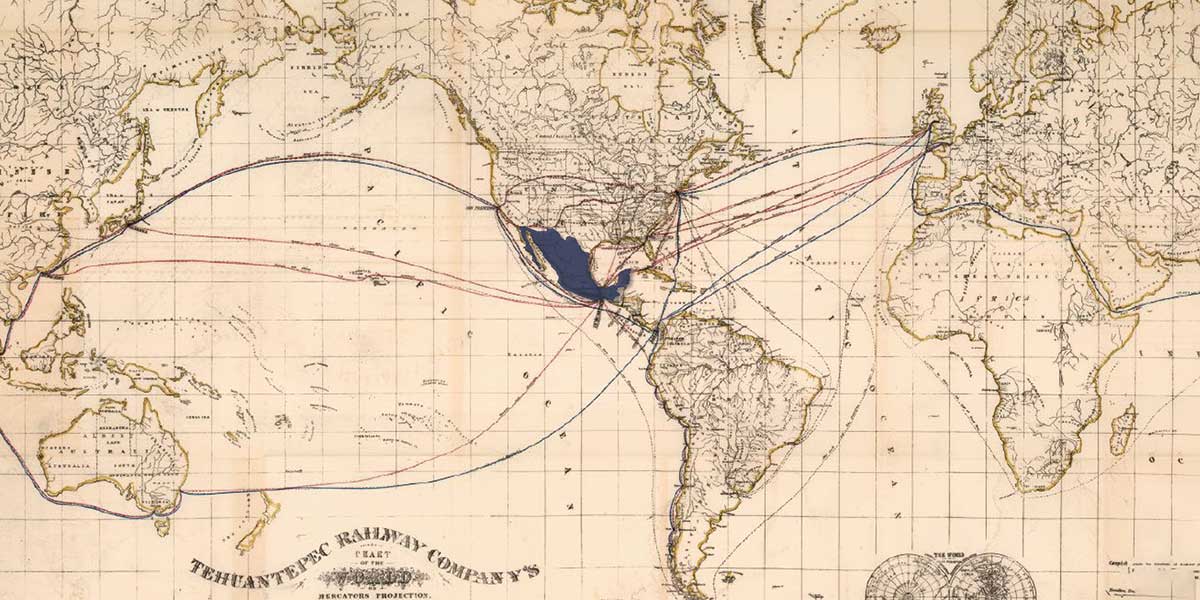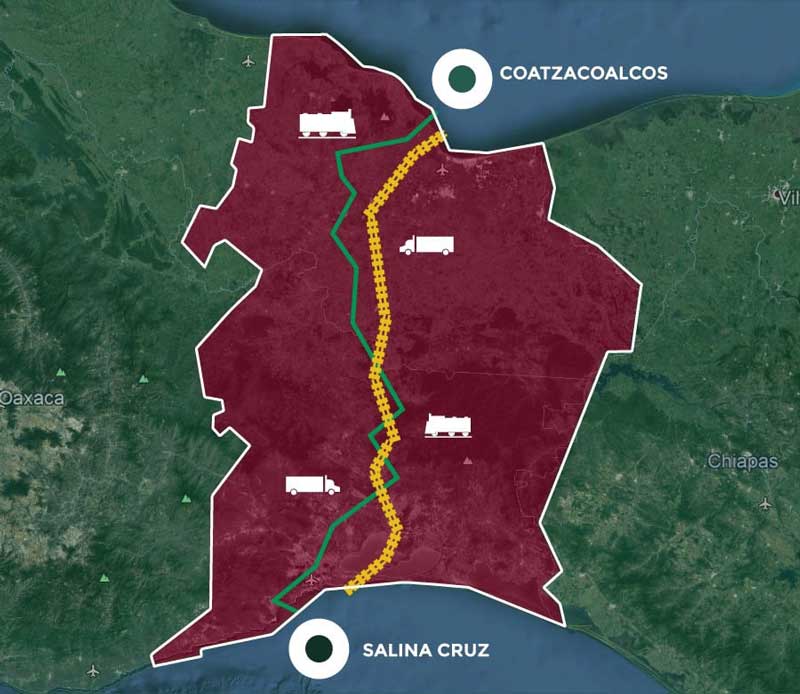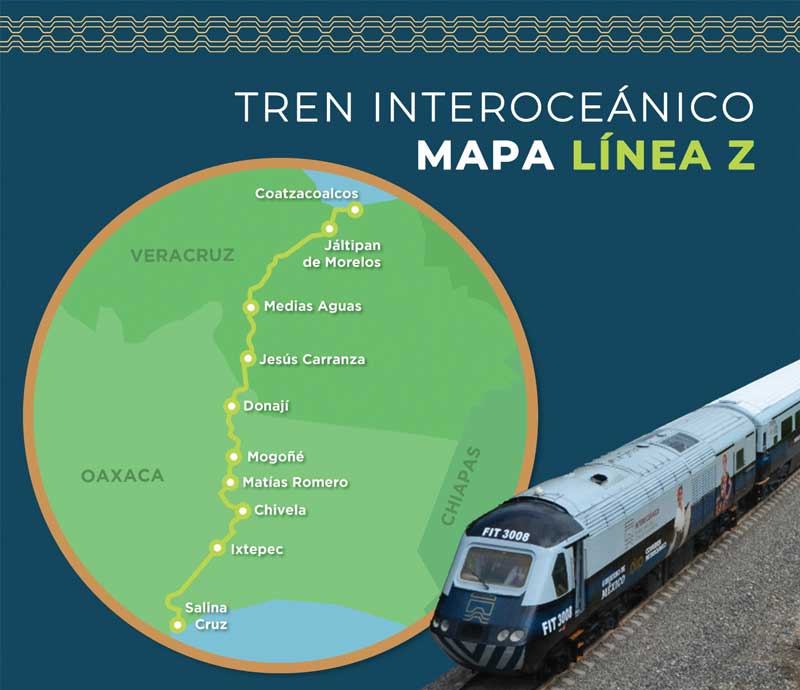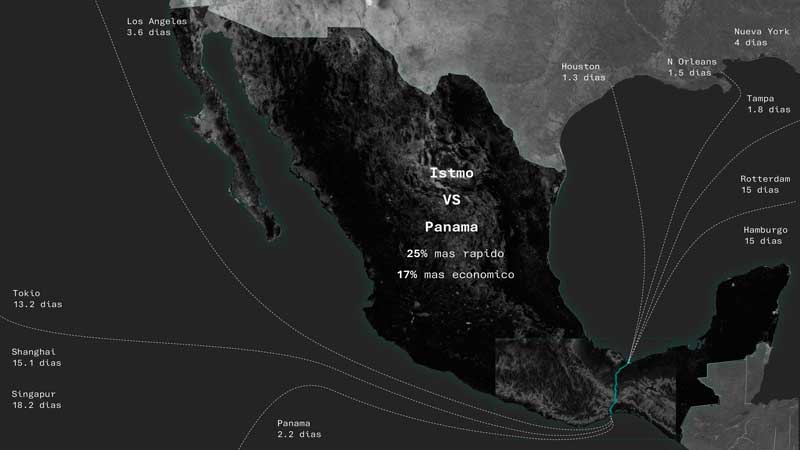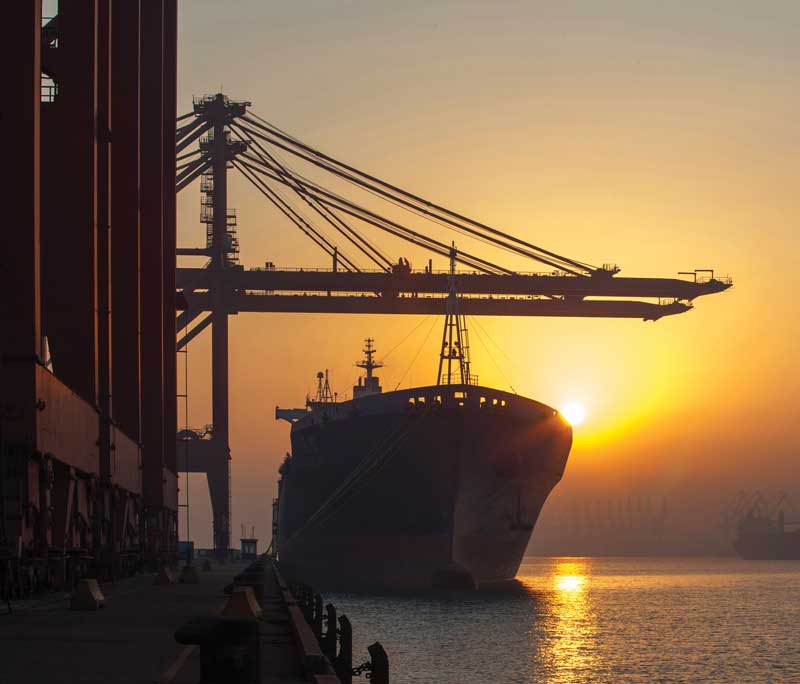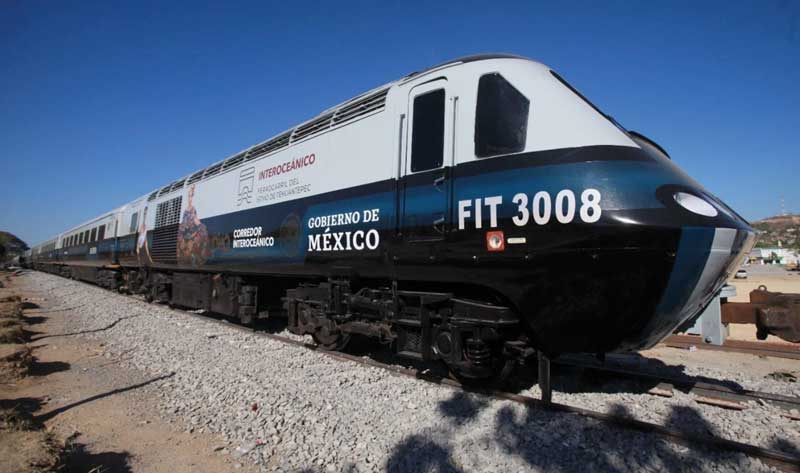On December 23, 2018, Rafael Marín Mollinedo presented to the President of Mexico, Andrés Manuel López Obrador, the project: Program for the Development of the Isthmus of Tehuantepec.
Marín, who was the first in charge of the project, explained at that time that "the Program revolves around the concept of a multimodal interoceanic corridor to take advantage of the geostrategic position of the Isthmus of Tehuantepec and compete in the global markets for the mobilization of goods through the combined use of various means of transport."
The CIIT will serve to utilize the strategic position of the Isthmus for the benefit of both the region and the country in a world eager for more interoceanic connection centers due to the intensification of commercial flows that require reaching increasingly distant markets as quickly and cost-effectively as possible.
Above all, the program aims to promote sustainable economic development in the region by enhancing its productive capacity in all sectors of activity, utilizing its own resources, not only offering the world an efficient, fast, and low-cost means of transporting goods.
Free trade zones will be created along the Isthmus to attract investments from the private sector, which will be provided with infrastructure and ensured access to energy, water, digital connectivity, and other basic inputs to meet the needs of businesses and the working population.
DESCRIPTION OF THE PROJECT
According to the federal government, the CIIT is located in the narrowest strip of the country, creating an integrated logistics platform consisting of the ports of Salina Cruz, Coatzacoalcos, Puerto Chiapas, and Dos Bocas, interconnected by 1,200 kilometers (km) of railroads of the Isthmus of Tehuantepec and the national road system.
Together, the establishment of the development poles will drive the southern and southeastern regions of the country. The logistics platform connects the states of Veracruz, Oaxaca, Chiapas, and Tabasco and allows for the transportation of goods in the region.
The CIIT takes advantage of the strategic location of the Isthmus to offer a modern and efficient alternative for regional and global trade with access to the United States, Asia, Europe, Central, and South America.
MODERNIZATION AND EXPANSION OF PORTS
To achieve this, a process of modernization and capacity expansion of the ports was initiated. Therefore, in the port of Coatzacoalcos, a road access is being constructed, a railway access to the port area of Laguna de Pajaritos is being built, and the customs facilities are being modernized to facilitate the reception, handling, and storage of foreign trade goods. Additionally, in Coatzacoalcos and Salina Cruz, two container terminals with a capacity of 1.4 million TEUs (Twenty-foot Equivalent Unit, a standard measure used in the logistics field to refer to the capacity of a container ship or cargo vessel) annually will be built to enhance interoceanic goods transport.
The port of Salina Cruz is being modernized with the reinforcement of docks and the construction of a new commercial port. Furthermore, a 1,600-meter-long breakwater and a specialized container terminal are being constructed, offering a significant comparative advantage.
Recently, two ports were incorporated into the logistics platform: Dos Bocas, with an oil vocation, which due to its geographical position can serve the agro-industry of the region; and Puerto Chiapas, which will begin a process of strengthening.
The four ports are connected to the three railway lines of the Isthmus of Tehuantepec, which will provide both passenger and freight services.
STRATEGIC RAILWAY
The Pacific and Atlantic oceans are connected by 308 km of railway tracks of Line Z, which began operations last December with the movement of cargo and passenger transport.
Line FA will link Coatzacoalcos with Palenque through 328 km of tracks, and it has also started transporting goods, with passenger service from Coatzacoalcos to Roberto Ayala beginning in December. Simultaneously, Ciudad Ixtepec is connected to Ciudad Hidalgo through 459 km of Line K, whose rehabilitation will be completed in 2024.
To promote the installation of industries and strengthen productive activity in the region, nine development poles will be created with conditions to attract investments and enhance productive vocations. Companies that establish themselves in these poles will benefit from fiscal and non-fiscal incentives.
The Secretariat of the Navy is responsible for safeguarding the security of the logistics platform, development poles, and the population of the Isthmus.
With all these actions, the economic and social development of the region is enhanced with a sustainable, inclusive approach according to the Federal Government, which also considers that "the Program for the Development of the Isthmus of Tehuantepec marks the beginning of a profound shift in the country's economic development strategy."
HISTORICAL PROJECT
The history of the Corridor has its origins in the McLane-Ocampo Treaty, an agreement signed in 1859 between the governments of the United States and Mexico, led by President Benito Juárez. The treaty contemplated the creation of a railway that would allow perpetual transit rights through the Isthmus of Tehuantepec, in exchange for the payment of four million dollars. The agreement was never ratified by the United States Senate; however, in 1859, the construction of the railway began, which was inaugurated in 1894. However, lacking efficient port facilities and terminals, the project was handed over to the British company Pearson and Sons, which was tasked with its remodeling, as well as the refurbishment of the ports of Salina Cruz and Coatzacoalcos.
Subsequently, under the government of President Porfirio Díaz, the project to connect the cities of Salina Cruz, Oaxaca, and Coatzacoalcos, Veracruz, by railway—separated by 300 km—was launched. These cities did not exist and were founded as a result of the construction of both ports. The project was inaugurated on January 23, 1907.
Historical records reveal that 60 trains ran daily on this interoceanic crossing, mainly to transport goods from the Pacific Ocean to the east coast of the United States. The boom experienced by the Mexican Isthmus region was followed by a period of economic, political, and social crises, which canceled the possibilities of developing the region. Additionally, with the opening of the Panama Canal in 1914, the area was devalued as an interoceanic route, and the railway route was eventually abandoned.
Subsequent federal administrations reviewed the project, but attempts to reactivate it did not prosper.
BRINGING THE PROJECT INTO THE 21ST CENTURY
In bringing the project into the 21st century, on June 14, 2019, the Decree creating the Public Decentralized Body, with legal personality and its own patrimony, not sectorized, called the Interoceanic Corridor of the Isthmus of Tehuantepec, was published in the Official Gazette of the Federation. This consists of rebuilding the railway route, modernizing and expanding ports, as well as creating at least nine industrial parks. Additionally, it includes the creation of road infrastructure, gas pipelines, expansion and modernization of airports, installation of fiber optics. All of this will be accompanied by the construction of urban hubs.
The mission of the CIIT is to "Promote the integral, sustainable, and inclusive development of the Isthmus of Tehuantepec region, with full respect for the history, culture, and traditions of the Oaxacan and Veracruz Isthmus, through the implementation of a logistics platform that integrates the provision of port administration services and their interconnection through rail transport, and other actions that contribute to the fulfillment of said objective."
Among the objectives of the CIIT are to "Ensure, through public and private investment, the construction of the necessary physical, social, and productive infrastructure to strengthen the economic base of the Isthmus of Tehuantepec region, and improve, through the coordination of public and private entities, infrastructure, security, and productive activity to overcome the backlog of the Isthmus of Tehuantepec region."
Among the development areas of the industrial poles are the electrical and electronic industries, automotive, auto parts and transportation equipment, agribusiness, medical devices, pharmaceuticals, and petrochemicals, among others. Leveraging its strategic location, it is ideal for interoceanic transportation and the export of products to the continent and the world.
To achieve the stated objectives, the economic strategy of the Isthmus Program is based on the following components of strategic importance:
- Infrastructure projects that constitute the takeoff platform of the Program: roads and rural roads, ports, railways, fiber optics, electricity supply, gas, water, services for production, and infrastructure for social services.
- Strategic projects aimed at leveraging the region's geostrategic location and enhancing its value generation capabilities: Multimodal Logistics Corridor and Development Poles to integrate Industrial Production Ecosystems.
- Programs for strengthening regional productive activity, aimed at increasing productivity and production, and enhancing the potential for generating opportunities, value, and income for all productive sectors.
- Cross-cutting support programs to enhance the creation of opportunities from sectoral programs: community development, human capital, research, technology and innovation, culture, land and ecological planning, public security, and social peace.
It is expected that before the current administration ends, more than 3,000 km of railways will have been built in the country, including those corresponding to the Interoceanic Train of the Isthmus of Tehuantepec, which will connect with the Mayan Train at one of its stations.
Text:Jesús Arias
Photo: FERROCARRIL DEL ISTMO DE TEHUANTEPEC / FGTTG / af / ENVATO /

